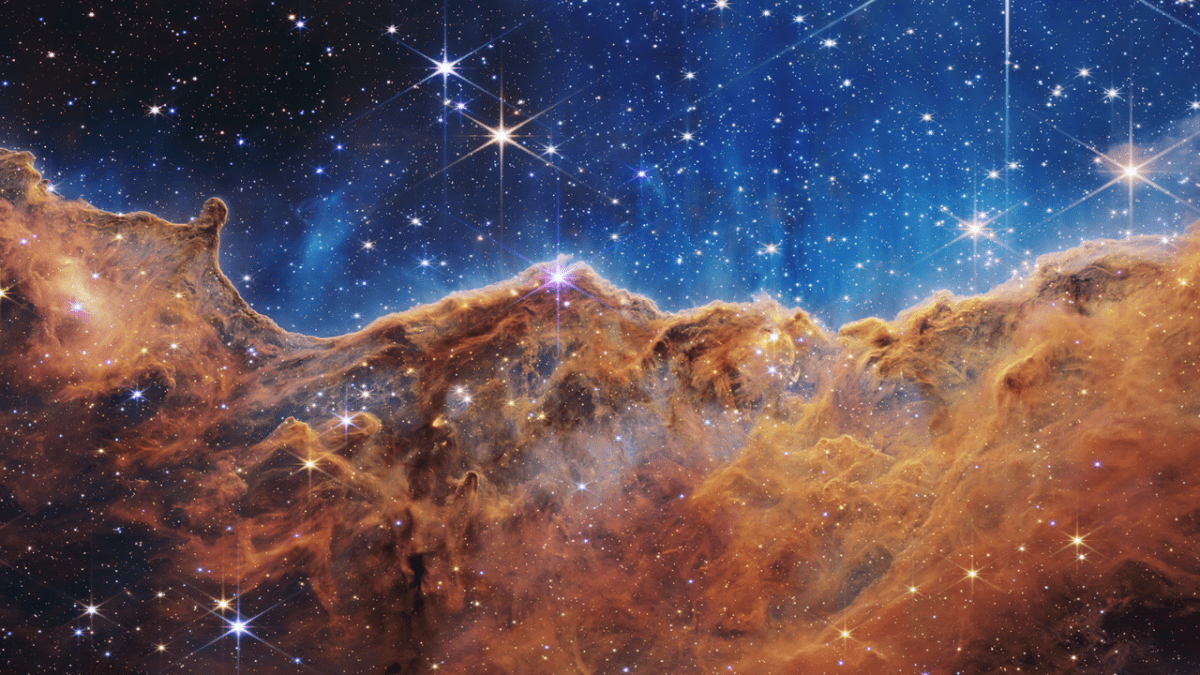
NASA has released the second batch of photos from its $10 billion James Webb Space Telescope after the first photo dropped yesterday and blew everyone’s tiny, insignificant minds.
The first image was the deepest and sharpest image of space ever seen. It was a massive cluster of thousands of galaxies about 13 billion light years away. BILLION.
The latest photos zoom in on “cosmic cliffs”, nebulas and galaxies to show incredible detail of stars and clouds and the colours are stunning.
“These images, including the deepest infrared view of our universe that has ever been taken, show us how Webb will help to uncover the answers to questions we don’t even yet know to ask — questions that will help us better understand our universe and humanity’s place within it,” NASA Administrator Bill Nelson said.
We have six photos here so let’s unpack what we’re looking at.
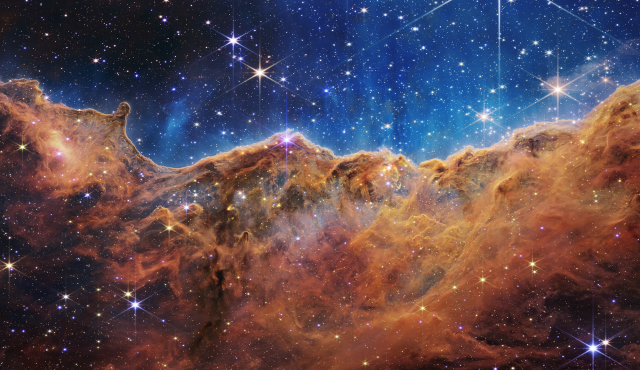
The first image is called “cosmic cliffs” because it looks like twinkling mountains and valleys but it is actually the clearest image we have of star birth. A star is literally born. Gaga could never.
It is the edge of a giant, gaseous cavity in the NGC 3324 region of the Carina Nebula. This area of star birth was previously invisible.
The tallest “peaks” in this image are about 7 light-years high. I feel sick.
The steam that appears to be coming off the red mountains is actually hot, ionised gas as well as hot dust streaming away from the nebula due to insane levels of ultraviolet radiation from the star.
It was captured by the telescope’s Near-Infrared Camera (NIRCam) which gives us full-colour photos with resolution (more pixels) and wavelengths (kinds of light) not visible to the human eye and never seen before.
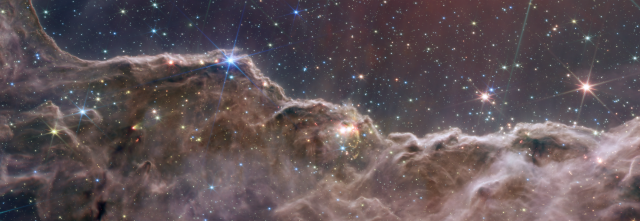
Here’s the same star birth captured by both the Near-Infrared Camera (NIRCam) and Mid-Infrared Instrument (MIRI).
“In MIRI’s view, young stars and their dusty, planet-forming disks shine brightly in the mid-infrared, appearing pink and red. MIRI reveals structures that are embedded in the dust and uncovers the stellar sources of massive jets and outflows,” a NASA spokesperson said in a press release.
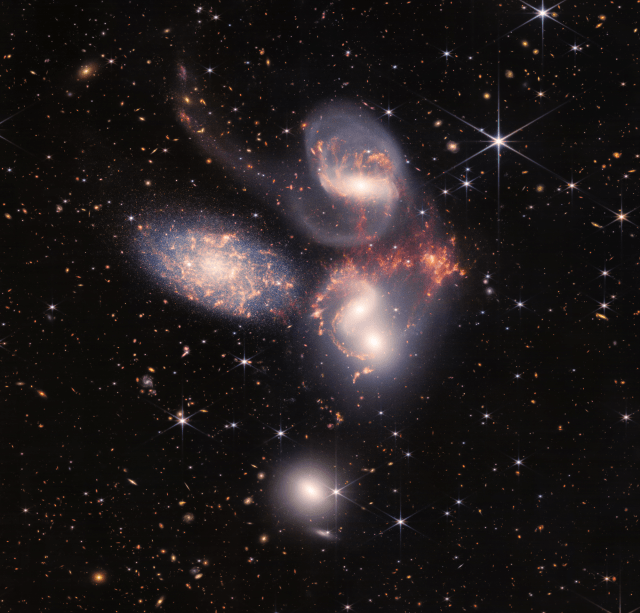
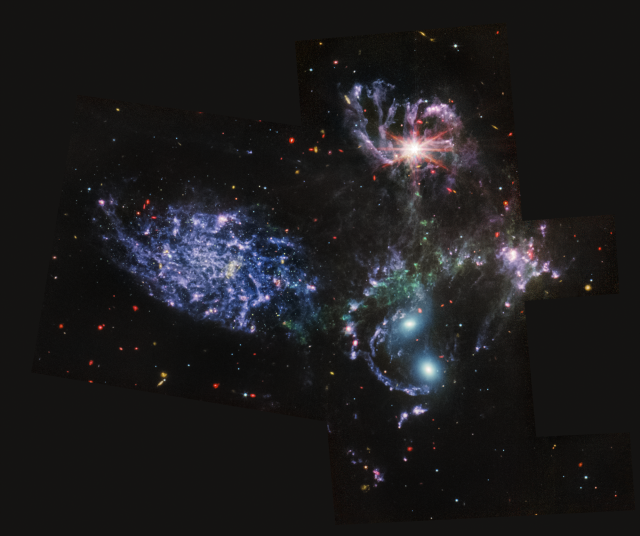
Next we have two images of Stephan’s Quintet, made up of the five galaxies known as the Hickson Compact Group 92 (HCG 92).
The first image is the largest image to date from the Webb telescope, covering an area about one-fifth of the Moon’s diameter. It contains more than 150 million pixels and is made up from almost 1,000 separate image files. She big.
Ready for some numbers?
The galaxies look like they’re about to collide but they’re actually nowhere near each other.
The fifth and leftmost galaxy called NGC 7320 is 40 million light years from Earth, while the other four galaxies (NGC 7317, NGC 7318A, NGC 7318B, and NGC 7319) are about 290 million light years away. I’m sweating.
NASA also assured us that 290 million light years away is actually still “fairly close” in cosmic terms. Ok yep that’s fine.
To show you just how much detail this telescope gives us, below are the previously best photos we had of the Carina Nebula and Stephan’s Quintet. They’re pretty but, you know, they’ve got nothing on Webb.
Zooming way out, this is Stephan’s Quintet…five galaxies packed so close together you’d think they were photoshopped. Two of these galaxies are actively colliding! Again, a well-studied patch of the sky that contains TONS of opportunities for new insight. pic.twitter.com/5iXyxV1VSL
— Hank Green (@hankgreen) July 11, 2022
Finally Webb gave us new images of the Southern Ring Nebula.
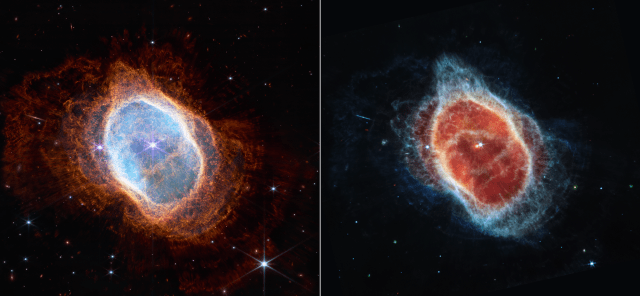
This side-by-side comparison shows the nebula captured by in near-infrared light on the left and mid-infrared light on the right.
The nebula was created by a white dwarf star, which is the name for remains of a red giant star, similar to our sun, after it has shed its outer layers and stopped burning.
It has been ejecting mass – the visible shells of material — for thousands of years before it became a white dwarf, which is what formed this massive glowing ring.
The nebula is only about 2000 light years away so hey practically our neighbour.
Keep nerding out on the Webb Telescope’s own website, I’m going to go lie down.



